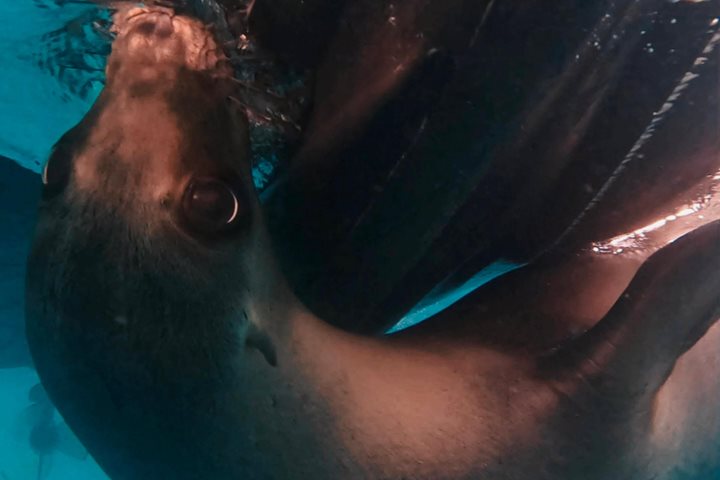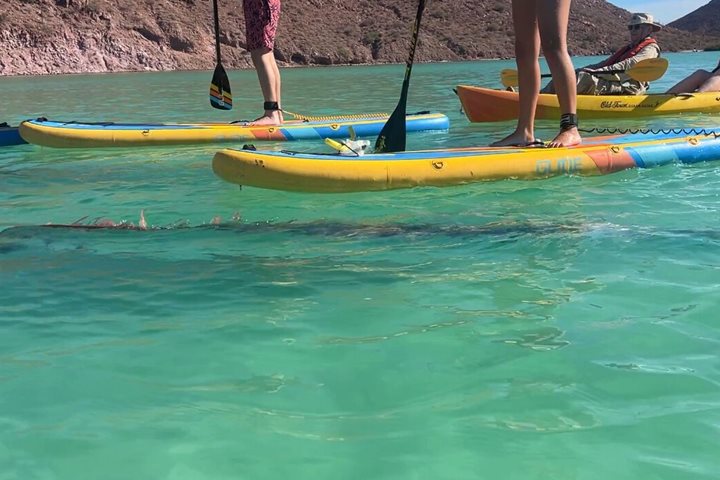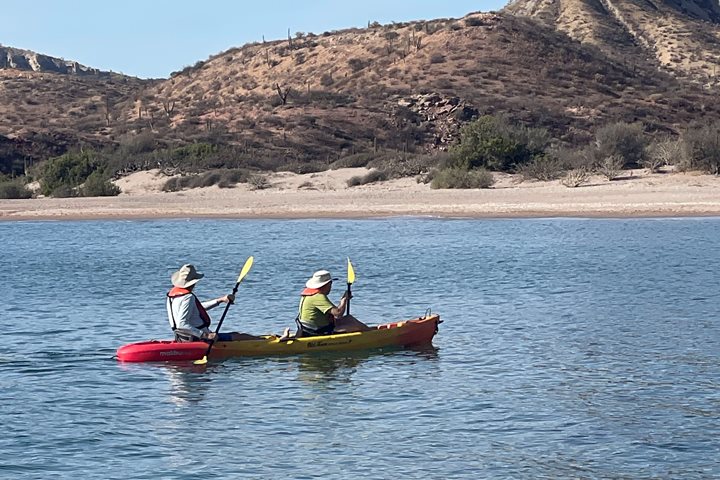The first full day of our expedition to explore Mexico’s Sea of Cortez couldn’t have had a better start. We watched a spectacular sunrise that illuminated both the sky and the ocean with fiery red and orange tones. The colors seemed to validate the very first name given to this beautiful body of water by the Spaniards in the 1500s: Vermillion Sea. The name had its origin in those early morning or late evening colors. As we approached San Ildefonso, a small rocky island located between Loreto and Mulegé, we spotted not one but two fin whales, the world’s second largest animal! We watched the elegant creatures slowly move around as they swam close to each other, and we marveled at their elegant lines and long bodies. This was all before breakfast.
After enjoying our morning meal, we boarded our Zodiacs to explore the island and its inhabitants. San Ildefonso is home to a large number and variety of birds, and we delighted at the sight of red-billed tropicbirds, eared grebes, Craveri’s murrelets, yellow-footed gulls, and ravens. A few other species were particularly abundant, especially brown- and blue-footed boobies, brown pelicans, and magnificent frigatebirds. We observed many pelicans and frigates nesting or resting on rocks or small bushes, and more filled the sky around us. Something diverted our attention from the birds, though: a humpback whale! We all had excellent views of the whale. A few bottlenose dolphins and a couple groups of California sea lions rafted on the surface to warm up in the sun. And then something else called our attention, something even larger this time: fin whales again! Watching them from National Geographic Venture was impressive enough but seeing them at water level was quite an experience!
Later, the ship continued sailing in the glassy seas. We spotted lots of mobula rays in all directions. Many of us had excellent views of a couple of the rays and a hammerhead shark while having lunch in the dining room! We encountered a small group of long-beaked common dolphins that didn’t show much interest in us, but the evening gave us another surprise in the form of a blue whale, the biggest animal that has ever lived on this planet! We followed the humongous whale and watched in awe as it lifted its flukes up in the air at the beginning of deeper dives. In total, we observed six species of marine mammals on this first day. It was an incredibly auspicious start to our expedition!
Photo caption and photographer: Humpback whale flukes off San Ildefonso Island. Photo by Carlos Navarro







